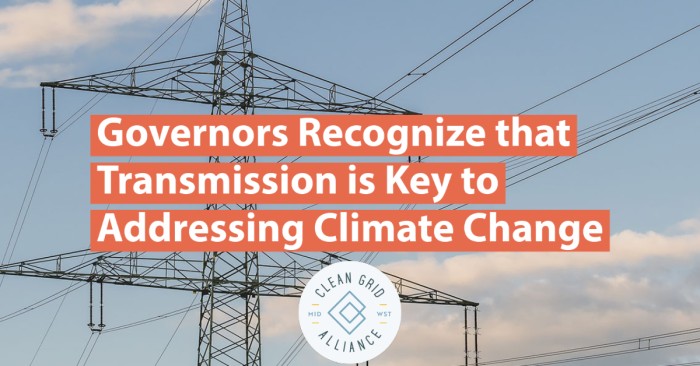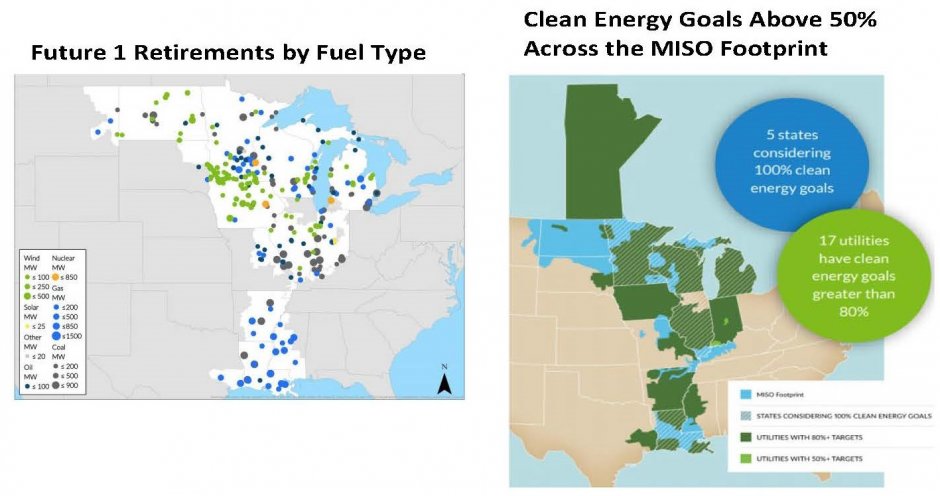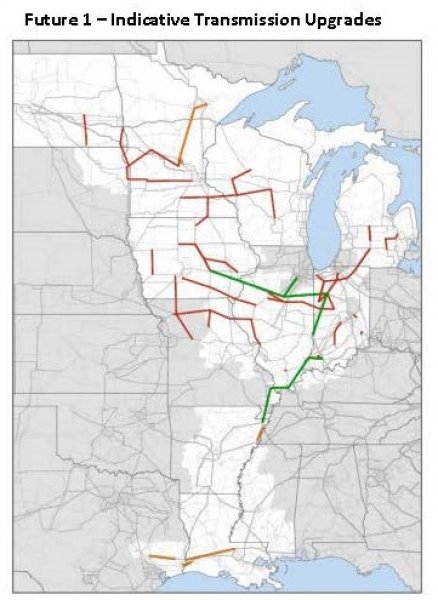Governors Recognize that Transmission is Key to Addressing Climate Change
 | Natalie McIntire, Technical/Policy Consultant |

 | Natalie McIntire, Technical/Policy Consultant |
We’ve said it before and we’ll say it again, a robust transmission grid is critical to both addressing climate change and to keeping the lights on for consumers. Recently, four Midwest Governors sent a letter to the Midcontinent Independent System Operator (MISO), the region’s transmission operator, indicating their support for MISO’s Long-Range Transmission Planning (LRTP) effort, and urging MISO to move forward expeditiously to ensure that the region has the grid capacity needed to respond to the growing demand for clean energy resources. CGA commends these governors for their support of regional transmission planning and applauds MISO for taking up this critical work of forward looking transmission planning, which is key to supporting clean energy and a reliable grid.
The demand for renewable energy is coming not only from states with carbon reduction or renewable energy policy objectives, but also from utilities, who see the dramatic reduction in the cost of renewables and are planning to retire fossil-fueled generation plants, and from corporate and industrial customers who have established sustainability goals.

The transmission grid is the delivery system for our electricity. It operates much like the highway system that helps deliver goods to consumers and gets people where they need to go. We need new transmission paths for several reasons. First, the location of wind and solar generation is different from where many of our existing electricity generation plants are sited. As these old plants are retired and new wind and solar farms are built, new transmission lines are needed to ensure that this clean power can be delivered to the businesses and homeowners who need it, and more importantly, when they need it. Second, as we shift away from transportation and home energy uses that rely on fossil fuels, we expect electricity consumption to increase and a strong transmission grid will help meet these new electricity needs. Finally, we are seeing more extreme weather events, which can make it challenging to keep the lights on, either because electricity generators are not able to produce under extreme weather conditions, such as the cold snap that caused massive power outages in Texas in February for instance, or because severe storms can damage transmission lines causing outages. In those instances, a more robust grid keeps our electricity system more reliable because having more transmission lines provides more pathways for the electricity to reach the need. Alternatively, transmission provides options for the grid operator to deliver power from generators in areas of the country not affected by the weather event.
Ultimately, if we want to be able to rely on cleaner electricity sources and be prepared to manage our electricity system reliably under climate driven extremes, we need to plan for a grid that can serve these needs. And, because transmission takes 3-10 years to plan, site, permit, and construct, we are grateful that MISO has started this planning process now!

MISO has the best view of the transmission grid in the region. They independently operate the electricity market and plan the grid to make sure it stays reliable as load grows and generation shifts from carbon based fuels like coal and gas to cleaner wind and solar, and battery storage. MISO and its utility members have the know-how to get this done. They just need our support to move forward with the Long Range Transmission Planning process they have already started.

Subscribe to our newsletter for the latest on energy & our work
Each year MISO works with its utility members and other stakeholders in the region, like Clean Grid Alliance, to identify any new transmission that will be needed. CGA is a member of MISO’s Environmental Sector, one of eleven diverse sectors of stakeholders that have different opinions about what the future will look like, and the types of electricity generation that should serve consumers. Some of those sectors don’t want to see a switch to clean energy and are trying to stop this planning process. One reason is that allowing more clean energy resources on the grid creates competition for older fossil generators that are more costly to operate. CGA supports this kind of competition because it ensures that consumers not only benefit from cleaner air and water that renewables provide, but also from the lower cost of renewables. After all, the cost of wind energy has dropped 70 percent in the last decade, and solar costs have declined 90 percent over the same period.
We commend Governors Whitmer, Pritzker, Walz, and Evers for their commitment to ensuring their “States are prepared to address the urgent and immediate threats of climate change” for offering their support for MISO’s Long Range Transmission Planning effort and for highlighting the urgency of this work. We hope you will support this transmission planning work for a cleaner energy future, and that you will urge your state and local leaders to support this work as well.
Renewable energy is just smart; and building the grid infrastructure to support it ensures that clean, reliable, low-cost energy can be delivered to homes and businesses for decades to come. And a more robust grid will increase the reliability of the grid and electricity delivery as we make this transition and beyond.
All graphics from the “MISO Futures Report,” April 2021